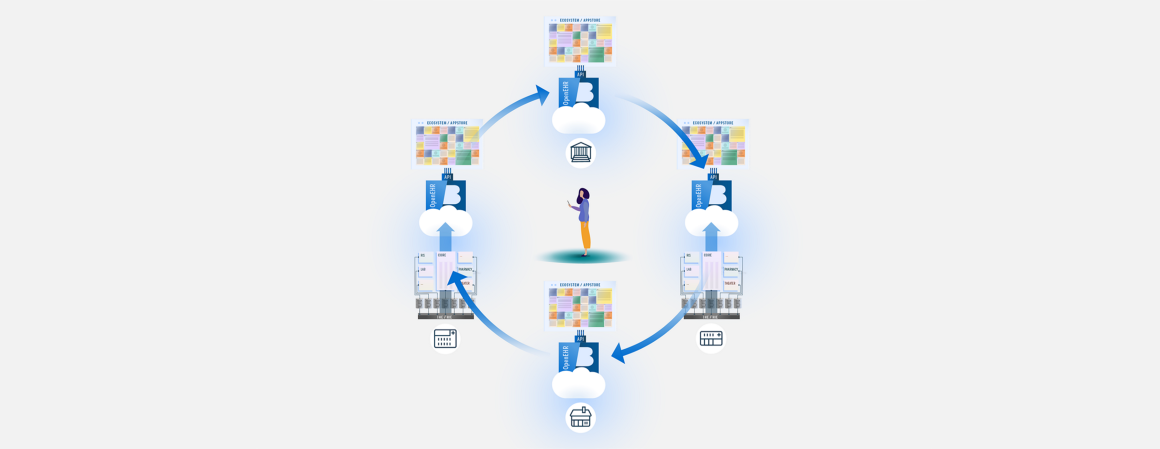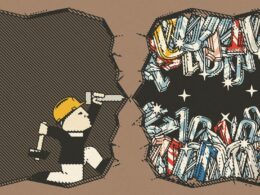Better
July 20, 2022
This site version was edited by:
Joaquim Cardoso MSc.
health transformation . institute
digital health unit
July 28, 2022
“What we stand for at our core is how we store and organise data in a very structured way that is going to allow health teams to get timely access to information and to collaborate around that information.”
We talked to Alastair Allen, CTO of Better, about the importance of data in modern healthcare ecosystems.
He explained how to use data for better care of patients, he talked about the digital transformation of healthcare and about how low-code tools can benefit that, and about the collaboration between different standards.

We all agree that health and care data is of immense value and should be held for a lifetime of patients. How should we use this data to provide better care for patients?
This is why we are really all here doing what we do, to deliver better outcomes for individuals.
Data is at the core of that.
If data is held in lots of distributed federated silos, it is really hard to get insights from the data.
The key thing we need to solve is how to store and organise information in a way that allows us to get insights from the data.
If data is held in lots of distributed federated silos, it is really hard to get insights from the data.
The key thing we need to solve is how to store and organise information in a way that allows us to get insights from the data.
There are a couple of things we can do.
First of all, direct care is enabled.
Health and care professionals have access to information more easily so they are not going to lots of different places, and maybe referring to paper.
Secondly, secondary use of data and insights into patients becomes really important.
For example, patients with certain characteristics can be grouped together into cohorts that could be based on their demographic information, maybe some complaints they have.

We then start to understand what do we do with these people, how were they treated, what were the interventions applied, and then ultimately what were the outcomes?
This allows us to identify patterns among patients of this group.
And then we can ask ourselves how do we apply that to other cohorts of people, either within a particular area or even across an entire population.
This allows us to generate and hopefully improve patient outcomes.
So I think having really clear organized data, well classified and well-structured, is going to enable us to do these kinds of things.
So I think having really clear organized data, well classified and well-structured, is going to enable us to do these kinds of things.

One of the key aspirations of Better is to accelerate the digital transformation of healthcare by empowering citizen developers. How do we achieve this goal?
Low-code is an emerging approach to software development that really allows non-developers or citizen developers to create applications in a drag-and-drop manner without requiring traditional software engineers.
Why is this important? Healthcare organizations traditionally have one of two choices.
- They can purchase a commercial off-the-shelf product, which traditionally is not very flexible.
- The other option is to hire a team of software engineers and build a software service.
Low-code sits in the middle between those two options and gives healthcare organizations the ability and the flexibility to build applications without the constraints of a commercial product and equally without the cost of paying software engineers.
Low-code sits in the middle between those two options (buy or build) and gives healthcare organizations the ability and the flexibility to build applications without the constraints of a commercial product and equally without the cost of paying software engineers.
At Better, we are trying to sit in that middle ground and create a platform and a toolset that allows complex problems to be solved, building on the data, which is really important.
What we’ve done is quite different to many other low-code tools.
We start with the data and we build the applications up from that, and that helps us address a lot of questions that exist within healthcare.
What we’ve done is quite different to many other low-code tools.
We start with the data and we build the applications up from that, and that helps us address a lot of questions that exist within healthcare.
This approach is allowing us to deliver projects more cost-effectively and in shorter periods of time.

Why are low-code tools so important in healthcare IT and how can they solve complex healthcare problems?
The idea of low-code is incredibly important.
The transformation has traditionally been an IT-led function.
Whether that was software delivery or an IT department buying a commercial product off-the-shelf.
What low-code really does is it allows citizen developers who are not programmers to build applications and think of the possibilities that no longer need to be from the people in the IT department.
It can be people from the clinical community or the care community working with their counterparts to understand problems and use these platform tools to quickly assemble applications.
I have seen it in action in a number of projects I have been involved in, where change actually starts to permeate across the organization, where people are trying to use these tools, and they are able to build applications quickly and cost-effectively.
What low-code really does is it allows citizen developers who are not programmers to build applications and think of the possibilities that no longer need to be from the people in the IT department.
The right guardrails are also in place so that the low-code tools are seen as a service, they are secured, and there is governance around who has access.
You can take and build applications, and together that really helps accelerate and drive transformation across the healthcare system. So for me, that is a really important area for accelerating delivery in healthcare.
The right guardrails are also in place so that the low-code tools are seen as a service, they are secured, and there is governance around who has access.

What are the main advantages of openEHR standard and why is separating data from applications so important in healthcare?
First of all, I think traditionally we have had a very application-centric architecture in healthcare, where applications each have their own data storage and each application is responsible for storing all of the data and sharing that data.
And as you can imagine, across the entire healthcare system, there are lots of applications, and that often leads to fragmented data and duplicated data, and the need to share information across all of those applications.
The traditional approach to doing this lies in what we often refer to as interoperability, sharing information and sending information between applications.
I think we need to turn that around and move from the application-centric model to a data-centric model.
I think we need to turn that around and move from the application-centric model to a data-centric model.
We should define a common language at the data layer, and this is expressed unused across all the applications.
Interoperability then really becomes a characteristic of the service as opposed to a set of APIs or technical activity.
This is where openEHR really comes into its own.
It is a standard that has been around for 20 years, is really mature and stable, and has a really robust modeling framework that allows us to model the clinical concepts in a way that allows this data-centric architecture to be enabled.
That then allows the innovation to take place around it and collect existing or new applications into that environment and ultimately create an interoperable ecosystem of connected applications.

You said that the collection of digital health standards should be combined. How can FHIR and openEHR work together to solve health and care problems?
If I think of my own journey and look back, five years ago I felt that FHIR and openEHR were almost competitive standards that were very similar.
But as I have worked through a number of projects, I’m coming around to the idea that they are complementary standards that need to work together.
- If you look at how they are differentiated, ultimately FHIR has been designed as a way to exchange healthcare information and is focused around the API level.
- On the other hand, openEHR has been designed to model those clinical domain models and persist that information.
Quite different focuses, but they are almost inverted from one another. I think the opportunity really exists to bring these two together.
There is a ton of really great applications out there that communicate using FHIR.
How do we connect those applications up and then ultimately store that information in a clear structure and well-modeled framework such as openEHR?
I think doing that will help us to create more open and interoperable ecosystems.

When we talk about the future of digital healthcare, what are your predictions? With Covid-19 we have seen a lot of innovation and optimization, but where are we headed in the future?
I think Covid-19 has had a massive impact in a number of different ways and that impact will be around for a long time.
There are two or three elements that stand out for me.
The first one is the expectations that it has set around the speed of delivery.
During Covid-19, I worked on projects where the delivery timeline was measured in days and weeks, not in months and years.
There are many different aspects to delivering and people and culture are big parts of that.
There are technical elements to this as well.
Things like the cloud and low-code tools, these technologies bring teams closer to the user so they are worrying less about infrastructure, worrying less about writing lots of code, and focusing more on what the user needs.
Things like the cloud and low-code tools, these technologies bring teams closer to the user so they are worrying less about infrastructure, worrying less about writing lots of code, and focusing more on what the user needs.
Doing that allows us to deliver things more quickly. That is going to be something we see a lot more of. Our customer expectations are very advanced in that way as well.
The second area is that the situation has forced us to become more patient-centered.
We have talked about this for many years, but overnight, everybody needed to do remote consultations, it didn’t matter where the patient was.
We were able to engage with them in a way we are going to see continue.
Care will be delivered closer to home, outside of the hospital.
Care will be delivered closer to home, outside of the hospital.
From a technology perspective, I think that is going to give rise to lots of innovations. We are going to see continued growth.
- That will in turn give rise to huge new streams of data and we will need to find ways to store and organize that.
- AI and machine learning will become really important and the data will feed those AI models that will drive some of the insights.
- And ultimately, I think this will lead to more preventative and personalized care.
Today, typically, clinicians and care workers probably work in more of a static environment where information changes less frequently.
I think we are going to see that move to real-time streaming of information that allows a proactive, collective way of delivering healthcare. That will ultimately provide better patient outcomes.
Today, typically, clinicians and care workers probably work in more of a static environment where information changes less frequently.
I think we are going to see that move to real-time streaming of information that allows a proactive, collective way of delivering healthcare. That will ultimately provide better patient outcomes.

What role does Better play in constructing the future of healthcare?
We want to empower health and care teams to improve collaboration, and to help improve patient outcomes.
We believe deeply that good data is key and should follow the patient for their lifetime.
What we stand for at our core is how we store and organise data in a very structured way that is going to allow health teams to get timely access to information and to collaborate around that information.
If you take that forward level, how do we allow health and care teams to make use of that data to get better insights into that data?
Low-code technology is the one that will allow us to build applications, will allow the healthcare teams themselves to build applications, and that is going to empower and enable their transformation.
We are going to see the emergence of analytics, artificial intelligence, and machine learning to really learn from the data, to get insight from the data, and to use that to improve how care is delivered across the population.
Low-code technology is the one that will allow us to build applications …
We are going to see the emergence of analytics, artificial intelligence, and machine learning to really learn from the data, to get insight from the data, and to use that to improve how care is delivered across the population.
I think these are the areas that Better will be focused on, trying to take the pain away from knowledge and infrastructure, and making it easy for healthcare teams to get value from the data.
I think these are the areas that Better will be focused on, trying to take the pain away from knowledge and infrastructure, and making it easy for healthcare teams to get value from the data.
Names mentioned
Alastair Allen, CTO of Better
Originally published at https://blog.better.care.












